In This Issue
- Thiel’s Bet Pays Off
- Trump Win and Tech
- Presidency and Cloud
- Report from the CEO
- What It Means for IoT
- Presidential Politics
- Twitter Ruled Social
- Big Data Did Triumph
- All Digital Disruption
- Large Data Volumes
- FBI Warns of Attacks
- IT Security Market Up
- 2017 Storage Industry
- Next for IoT Security?
- Avoiding Cloud Storms
- Can’t Ignore the Cloud
- Coming DCIA Events
Peter Thiel’s Bet on Donald Trump Pays Off
Excerpted from NY Times Report by David Streitfeld
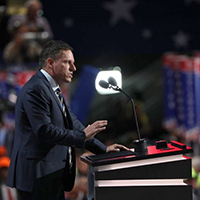 Peter Thiel, the billionaire investor at odds with much of Silicon Valley, will have President Trump’s ear on tech issues.
Peter Thiel, the billionaire investor at odds with much of Silicon Valley, will have President Trump’s ear on tech issues.
He won’t be moving to Washington, Mr. Thiel made clear in an interview Wednesday afternoon.
He is unlikely to have a formal role.
He has no desire to fulfill his youthful dream of joining the United States Supreme Court.
But he will have a voice.
“A page in the book of history has turned, and there is an opening to think about some of our problems from a new perspective,” Mr. Thiel said.
“I’ll try to help the President in any way I can.”
Mr. Thiel’s potential next steps in politics are being heavily scrutinized because the tech investor was one of the few businesspeople — and the only prominent one in technology — to publicly support Mr. Trump’s presidential run… Read More
What the Trump Win Means for Tech
Excerpted from Ars Technica Report by David Kravets
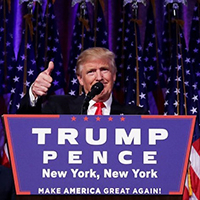
Republican Presidential Nominee Donald Trump defeated Democrat Hillary Clinton.
Trump will now become the 45th president, succeeding President Barack Obama.
“I say it is time for us to come together as one people,” Trump, the President-elect, told supporters in New York, shortly after Clinton called him to concede the election.
Here is where Trump stands on the issues near and dear to Ars.
Broadband, net neutrality: Trump’s Presidency could bring big changes to regulation of Internet service providers (ISPs) – but most of the changes are difficult to predict because Trump rarely discussed telecom policy during his campaign.
The Federal Communications Commission’s (FCC) net neutrality rules could be overturned or weakened, however, if Trump still feels the same way he did in 2014.
At the time, he tweeted, “Obama’s attack on the internet is another top down power grab. Net neutrality is the Fairness Doctrine. Will target conservative media.” Trump has promised a temporary moratorium on new agency regulations… Read More
What Trump Presidency Means for Cloud
Excerpted from Data Center News Report by Shannon Williams

The three leading global public cloud providers are all US-owned companies – Amazon Web Services, Microsoft and IBM SoftLayer.
What impact will an “America first” US president have on this market?
Ovum analyst Roy Illsley explores what a Trump presidency will mean for public cloud computing.
According to Ovum’s “ICT Enterprise Insights 2016/17 – Global: IoT and Cloud,” in Asia, the market for public cloud is expanding, with 70% of respondents reported that they will be using public cloud by 2018.
This compares with just over 50% in North America, which is a much bigger and more mature cloud market.
If global public cloud adoption slows and regional cloud adoption increases due to protectionism, OpenStack could be the winner, Illsley says.
“AWS, IBM, and Microsoft Azure are the three leading global public cloud providers, and they have built a presence in many different countries and regions,” he says… Read More
Report from DCIA CEO Marty Lafferty
 The US President-elect Donald Trump, by his own admission, is not much of a techie.
The US President-elect Donald Trump, by his own admission, is not much of a techie.
Even his prolific campaign tweets were actually posted online by aides.
But the new President’s policies will have a major impact on the technology sector, which continues to drive America’s largest growth industries.
And although technology was never central to either major party’s campaign, the winner did address relevant areas from time to time, which may provide a glimpse of things to come.
For example, the President-elect said he wants to “free NASA from the restriction of serving primarily as a logistical agency for low earth-orbit activities. We will instead refocus on space exploration. Under a Trump Administration, Florida and America will lead the way into the stars.”
Regarding consumer electronic device manufacturing, he said, “We’re going to get Apple to build their computers in this country instead of other countries.”
And on the issue of cybersecurity, which the DCIA believes should be high on the agenda for the first hundred days of his Presidency, Trump vowed to “order an immediate review of all US cyber-defenses and vulnerabilities, including critical infrastructure, by a Cyber Review Team of individuals from the military, law enforcement, and the private sector.”
“The Cyber Review Team will provide specific recommendations for safeguarding different entities with the best defense technologies tailored to the likely threats, and will followed up regularly at various Federal agencies and departments.”
“The Cyber Review Team will establish detailed protocols and mandatory cyber awareness training for all government employees while remaining current on evolving methods of cyberattack.”
Trump also said he will “instruct the US Department of Justice (DoJ) to create Joint Task Forces throughout the US to coordinate federal, state, and local law enforcement responses to cyber-threats.”
And also, “Order the Secretary of Defense and Chairman of the Joint Chiefs of Staff to provide recommendations for enhancing US Cyber Command, with a focus on both offense and defense in the cyber domain.”
Finally, he committed to “develop the offensive cyber-capabilities we need to deter attacks by both state and non-state actors and, if necessary, to respond appropriately.”
Given the overriding importance of cybersecurity, we ask DCIA member companies and DCINFO readers to help bring the issue to the forefront now. Share wisely, and take care.
Here’s What Trump Presidency Means for IoT
Excerpted from Business Insider Report
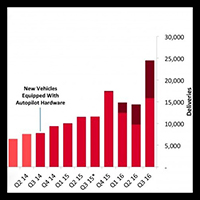
Donald Trump’s surprise win in the US Presidential election has sent ripples throughout the world, and the Internet of Things (IoT) is no exception.
Here are our first thoughts on the impact of the historic results on the IoT.
BI Intelligence has maintained an optimistic take on self-driving car adoption rates.
Much of this belief has been driven by the actions and plans of Tesla, which has aggressively moved to make its vehicles autonomous, with all new cars shipping with the hardware for full autonomy.
These autonomous vehicles, however, are also fully electric cars, and purchasers have thus far received generous tax credits in the US, making Teslas (relatively) more affordable.
Further, with the upcoming Model 3, Tesla was set to offer a car that a consumer could purchase, after credits, for under $30,000, creating a vast pool of cars with the capability for fully autonomous driving.
The Trump campaign, however, offered no proposals to combat climate change or pursue green policies… Read More
How Digital Tech Changed Presidential Politics
Excerpted from Talkin’ Cloud Report by Kris Blackmon
 The digital age has changed more than just the day-to-day lives of average voters.
The digital age has changed more than just the day-to-day lives of average voters.
From national security threats to election rigging, from what constitutes a modern-day scandal to how much a President is influenced by public opinion, technology today has greatly changed the concerns, policies and press relations within the White House.
As voters head to the polls today, let’s take a quick look back at some of the ways modern-day tech has made this a new kind of Presidential race.
Would Lincoln have been elected in the age of Facebook?
Would Woodward and Bernstein have been credited with toppling the Nixon administration if WikiLeaks had been a thing?
How would Reagan have navigated the Cold War if he’d had to deal with cyberterrorism?
And how might the 2000s have been different if Florida had used digital voting machines instead of punch card ballots resulting in the infamous hanging chads… Read More
Election Day, Twitter Ruled Social Media
Excerpted from NY Times Report by Mike Isaac and Sydney Ember

At around 5 a.m. Tuesday on the East Coast, the first signs of presidential chatter started stirring on Twitter, then quickly began to mushroom.
In the ensuing hours, Twitter’s 100 or so staff members working on the company’s Election Day efforts woke up and started dialing super PACs and advocacy groups to place last-minute ads in swing states. By 11 a.m., 27,000 election-related posts were swirling across the network every minute.
The volume of activity was set to soar throughout the evening and overnight, as polls closed and the results of the race between Hillary Clinton and Donald J. Trump came in.
Twitter, meanwhile, worked to promote itself as an election destination, using live video streams with partners like BuzzFeed News, in what was set to become one of the social media service’s busiest days.
Forget about Snapchat and set aside YouTube, Facebook and Instagram.
For all the bluster over the last year about which social media network would dominate the election, 2016 was no different from years past… Read More
Big Data Did Triumph on Election Day
Excerpted from Defense One Report by Patrick Tucker
 One computer forecasting system predicted Trump’s victory — the one with the least human input.
One computer forecasting system predicted Trump’s victory — the one with the least human input.
Donald Trump’s win surprised many around the world, but none more than the modelers and big league prognosticators who were calling for a likely Clinton victory.
That outcome doesn’t mean that data-driven forecasting died on Tuesday.
In fact, the best performance went to an artificial intelligence able to crunch more data than its human rivals.
The takeaway?
Forecasters need new ways to talk about the uncertainty of their models and need to expand beyond “polling data.”
The Defense Department and the intelligence community, who have also grown fond of machine aided prediction, would do well to heed that lesson.
There’s an important and overlooked distinction between a prediction (which suggests certainty) and a forecast… Read More
All Roads Lead to Digital Disruption
Excerpted from CIO Insight Blog by Pat Burke
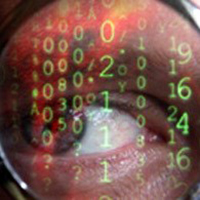 Companies that aren’t traveling along a digital path will face significant challenges down the road.
Companies that aren’t traveling along a digital path will face significant challenges down the road.
As most leaders know, success is accomplished through people.
Smart technology helps, but succeeding in today’s digital realm is a challenge that requires more than simply consuming more technology.
Without smart, dedicated workers adopting a people-first strategy that serves as the main platform of an organization, all other attempts to create a thriving business – whether through raw technology, innovation or brute business force – will eventually hit a wall.
In order to allow consumers, workers and ecosystem partners to accomplish more with technology, business and IT leaders will have to create a culture that sees technology as the way to enable people to constantly adapt and learn, continually create new solutions, drive relentless change and disrupt the status quo.
In an age where the focus is locked on technology, true leaders will put people first… Read More
Large Data Volumes – Fog a Solution?
Excerpted from Future Processing Blog by Marta Malek
 Technology is expanding and we are about to face 10 smart devices per person in 2020.
Technology is expanding and we are about to face 10 smart devices per person in 2020.
How to keep them all going smoothly? Can Fog Computing be the answer?
If the title term is new to you, we’ll gladly explain it:
Fog Computing (also known as Fogging) is a solution where cloud computing capabilities are used in pair with local devices.
Large volumes of data are stored locally, using the client’s own devices – this shortens the time needed to access their files, while still allowing to make use of the advanced functionality provided by cloud services.
What are the benefits?
In the reality where the number of devices we use increases every day, sometimes the amount of data is unimaginably large and even the cloud may get overflown – which basically means the access to data is limited, since the system is slower.
Using your local devices to store the data supports mobility, as well as may immensely improve efficiency… Read More
FBI Warns of Industry Internet Attacks
Excerpted from Wall St. Journal Report by Robert McMillan
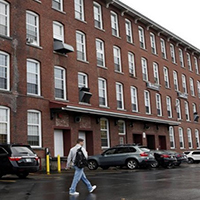 Online attacks launched from thousands of connected devices, such as one that disabled parts of the internet in October, are here to stay, the Federal Bureau of Investigation (FBI) is warning.
Online attacks launched from thousands of connected devices, such as one that disabled parts of the internet in October, are here to stay, the Federal Bureau of Investigation (FBI) is warning.
“The exploitation of the ’Internet of Things’ (IoT) to conduct small-to-large scale attacks on the private industry will very likely continue,” the FBI wrote in an October 26th bulletin to private companies.
A person familiar with the matter said a version of the bulletin that appeared on the internet Friday was authentic.
In a statement, an FBI spokeswoman said, “In furtherance of public-private partnerships, the FBI routinely advises private industry of various cyberthreat indicators observed during the course of our investigations.”
“This data is provided in order to help systems administrators guard against the actions of persistent cybercriminals.”
The FBI issued the bulletin five days after hackers used a network – called Mirai – of internet-connected devices including cameras and digital-video recorders to launch an attack on internet service provider (ISP) Dynamic Network Services (Dyn).
The October 21st attack left more than 1,200 websites unreachable for some… Read More
Growing Threats Fuel IT Security Market
Excerpted from Channel Partners Report by Edward Gately

Thanks to increasingly sophisticated cyberattacks, big growth rates are anticipated in the global markets for cybersecurity.
That’s according to BCC Research’s new report, Cyber Security: Technologies and Global Markets.
For purposes of the report, the cybersecurity market includes companies that provide products and services to improve security measures for IT assets, data and privacy across different domains such as the IT, telecom and industrial sectors.
“IT security is a priority in the prevailing highly competitive environment,” said Basudeo Singh, BCC Research analyst. “About $100 billion will be spent globally on information security in 2018, as compared with $76.7 billion in 2015.”
The global cybersecurity market should reach $85.3 billion and $187.1 billion in 2016 and 2021, respectively, reflecting a five-year compound annual growth rate (CAGR) of 17 percent.
The American market, the largest segment, should grow from $39.5 billion in 2016 to $78 billion by 2021, a projected five-year CAGR of 14.6 percent.
The Asia-Pacific region is expected to grow the fastest among all major regions at 21.4 percent… Read More
What Will 2017 Bring for the Storage Industry?
Excerpted from CloudTech Report by Rick Delgado
 In a field as competitive as the storage market is, knowing what’s going to happen before it actually happens can be extremely valuable.
In a field as competitive as the storage market is, knowing what’s going to happen before it actually happens can be extremely valuable.
And right now, the storage market is going through some big transitions, some of which are upending the industry.
This is kind of to be expected when dealing with a business that incorporates the latest technological advances, but even with that in mind, the rapid evolution underway at the moment is impressive to watch.
The storage market as we know it today will look quite different in a decade.
But let’s not get too far ahead of ourselves; we’ll keep our projections focused and take a brief but insightful look into the not-too-distant future as we see what the experts are saying about the storage market for 2017.
If one thing is consistent across the range of predictions being made, it’s that the role of cloud storage will be integral. More businesses are turning to the cloud for a wide variety of services with storage being one of the primary choices.
In a study released earlier this year, 451 Research found that the cloud storage market was expected to double by next year… Read More
What’s Next for IoT Security?
Excerpted from Semiconductor Engineering Report by Ed Sperling and Jeff Dorsch
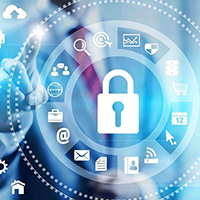 With security, the little things can cause as much of a problem as the big things.
With security, the little things can cause as much of a problem as the big things.
As shown in the recent distributed denial of service attack (DDoS) on Dyn, which created waves of attacks using Mirai malware, connected devices of all sizes can be amassed into an army of bots that can bring even giants like Amazon and Netflix to a dead stop.
This attack was predicted and warned against by numerous security experts since it was published as open source code several months earlier, but that did little to stop its progression.
And therein lies one of the key problems in security today.
There are not enough layers of security being built into electronics to stop these kinds of problems, and no standard way of creating them.
What’s interesting here is that the most recent attack went well beyond the usual software and network breaches.
It targeted the firmware inside devices that were secured by weak passwords… Read More
Avoiding Storms with Good Cloud Policies
Excerpted from Canadian Lawyer Report by Lisa Lifshitz
 It’s fair to say that while cloud computing offers numerous advantages to organizations, it also exposes them to unique risks.
It’s fair to say that while cloud computing offers numerous advantages to organizations, it also exposes them to unique risks.
As many cloud providers make it intentionally easy for individuals to sign up via one-click online agreements for their standard commodity services, companies without adequate controls in place may find themselves bound to unsuitable cloud services arrangements.
Failure to establish adequate checks and balances may expose organizations to regulatory non-compliance, inappropriate business terms or worse. To mitigate these concerns, organizations are increasingly proactively developing and implementing cloud-computing policies to oversee the adoption and implementation of cloud services and outline best practices and approval processes for using cloud services. A well-drafted cloud policy can be a useful governance tool to harmonize standards relating to the adoption of cloud services throughout an organization, promoting consistency and preventing unwelcome surprises… Read More
Businesses Can’t Ignore Growing Cloud Market
Excerpted from ZDNet Report by Dave Bartoletti
 Cloud computing has been the most exciting and disruptive force in the tech market in the last decade – and it will continue to disrupt traditional computing models at least through 2020.
Cloud computing has been the most exciting and disruptive force in the tech market in the last decade – and it will continue to disrupt traditional computing models at least through 2020.
Starting in 2017, large enterprises will move to cloud in a big way, and that will super-charge the market.
Forrester predicts that the cloud market will accelerate faster in 2017, as enterprises around the world look to cloud to power their core business systems in addition to their customer-facing applications. Forrester forecasts that the global public cloud market will reach $146B in 2017, up from just $87B in 2015.
As overall cloud adoption and spending ramps up further in the coming year, Forrester’s 2017 cloud predictions outline 10 key developments in cloud technology that will shape the industry in 2017.
Here are three examples of cloud trends that cannot be ignored in the New Year.
Beyond pay-per-use, buyers will save money in cloud in many ways. There are more ways to buy cloud services – on-demand, pre-paid, reserved capacity, enterprise agreements – every month, and this trend will accelerate in 2017… Read More
Coming Events of Interest
Rethink! Cloudonomic Minds — November 21st-22nd in London, England. R!CM will cover how IoT is impacting cloud strategies and how to take advantage of these two key technology trends.
Government Video Expo — December 6th-8th in Washington, DC. GVE is the East Coast’s largest technology event for broadcast and video professionals, featuring a full exhibit floor, numerous training options, free seminars, keynotes, panel discussions, networking opportunities, and more.
CES 2017 — January 5th-8th in Las Vegas, NV. More than 3,800 exhibiting companies showcasing innovation across 2.4 million net square feet, representing 24 product categories.
Industry of Things World USA — February 20th-21st in San Diego, CA. Global leaders will gather to focus on monetization of the Internet of Things (IoT) in an industrial setting.
fintech:CODE — March 16th-17th in London, UK. A new international knowledge exchange platform bringing together all DevOps, IT, and IoT stakeholders who play an active role in the finance and tech scene. Key topics include software development, technical challenges for DevOps, DevOps security, cloud technologies and SaaS.
retail:CODE — March 16th-17th in London, UK. 20 real-life case studies, state-of-the-art keynotes, and interactive World Café sessions, 35+ influential speakers will share their knowledge at the intersection of the retail and technology sectors.
